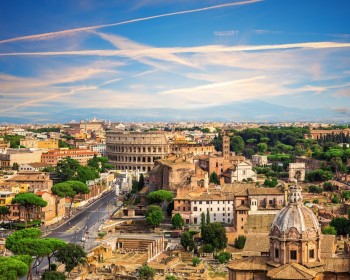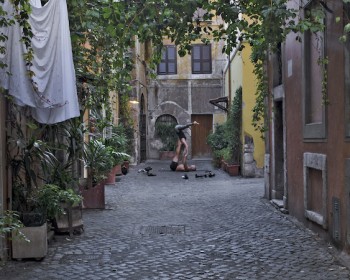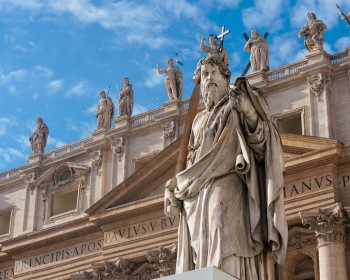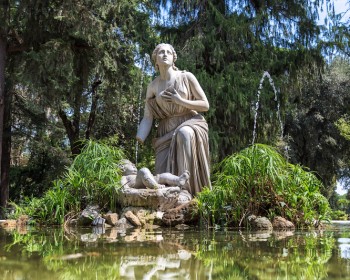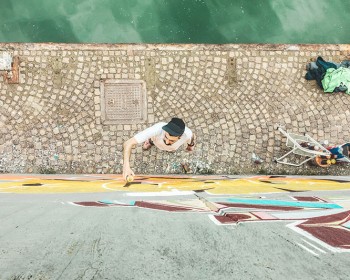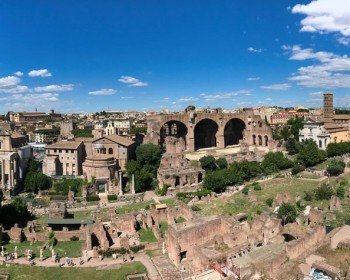The Colosseum, originally known as Flavian Amphitheater, is surely the most impressive building of Ancient Rome and is considered the largest building of its era. We heard so many stories and legends about it that is somehow impossible you’ve never asked yourself at least one of these 5 questions about the Colosseum. It is time to get the answers!
BOOK NOW COLOSSEUM AND ANCIENT ROME PRIVATE TOUR
1) Why is the Colosseum smaller than I thought it was?
Many tourists ask this question when they first rest their eyes on the ancient amphitheater. Though it might seem a silly question to a local or to Italians in general, it is something many foreigners wonder about. The simple answer is that, unlikely from what happened in the Roman times, today’s stadiums feature various additions to the main structure. For example concession stands, parking lots, press boxes and official shops for merchandising. Just have a look at the actual sizes of the fields themselves: a modern stadium’s field is only slightly bigger than the Colosseum’s Arena.
2) Why did the Colosseum become as broken as it is nowadays?
This is among the questions about the Colosseum that puzzle people the most. When the Roman Empire declined and the Middle Ages approached, the population of Rome started decreasing and most structures were abandoned. Therefore, the Catholic Church started using the Colosseum, as well as many other “pagan” buildings, as the Pope’s personal quarry. Stones from the Colosseum were used in both the Lateran and St. Peters, as well as bronze from the Pantheon which served as material to build the baldachin of St. Peter’s designed by Bernini. The ruins of ancient Rome were an excellent source of building materials during medieval times. Not only marble, but also the iron clamps holding the stones together (and that accounts for the famous “holes” that the Colosseum features today!)… The occasional earthquake didn’t help either!
3) Why was the Colosseum built?
Although it is true that one of the main reasons for the construction of the Colosseum was to symbolize the power of Rome and its emperors, the decision to build this amphitheater was taken in an attempt to make up for Nero’s extravagance, that had cost Rome the respect of its citizens. The rebellion by the Jews in Palestine against Roman rule provided the perfect chance to find the money needed to build the huge arena. After causing the great fire at Rome in AD 64 (but historians don’t agree completely that it was his fault) and causing a civil war four years later, emperor Nero had built a huge pleasure palace for himself (Domus Aurea, the Golden House) right in the centre of the city and it was there that Emperor Vespasian decided to build the Colosseum. He wanted to donate to the city a pleasure palace for the people that would house gladiator games. The Colosseum was inaugurated with 100 days of games and since the very start Vespasian decided admission would be free for everyone.
4) How long did it take to build the Colosseum?
It took surprisingly just 8 years, from 72AD to 80AD, for the Roman Empire to complete the Colosseum. Though it was commissioned by Emperor Vespasian, this latter never saw it completed, as it only was inaugurated one year after his death. By that time Vespasian’s son Titus was in power. The short time needed to finish the immense amphitheater is justified by the huge number of people involved in the construction works. Thousands of slaves to lift and transport the materials, thousands of skilled and semi-skilled workers to handle the construction materials, not to mention the slaves that were working in the quarries to cut the stones. This all add up to a staff of at least 20,000 to 30,000 people.
5) Is is true that mock naval battles were held inside the Colosseum?
Well, it is not certain that the Colosseum was used for sea battles (called “naumachiae”, greek word for “sea warfare”). What it IS sure is that they could only took place in the first two years after its construction. Emperor Domitian added some substructures in A.D. 81 that made sea battles impossible to organize. Poet Martial wrote that the amphitheater could “change from dry land to the sea very quickly”, and we know for sure that water courses used to run through that valley: there is still water running under the Church of St. Clemente’s today. It seems therefore very likely that engineers could easily induce water inside the Colosseum. In the very same spot where the Colosseum was built used to be a lake: engineers might have emptied the Arena after the naval battles using the same channels used to drain the water of the lake.
--> Discover also Colosseum scavenger hunt



